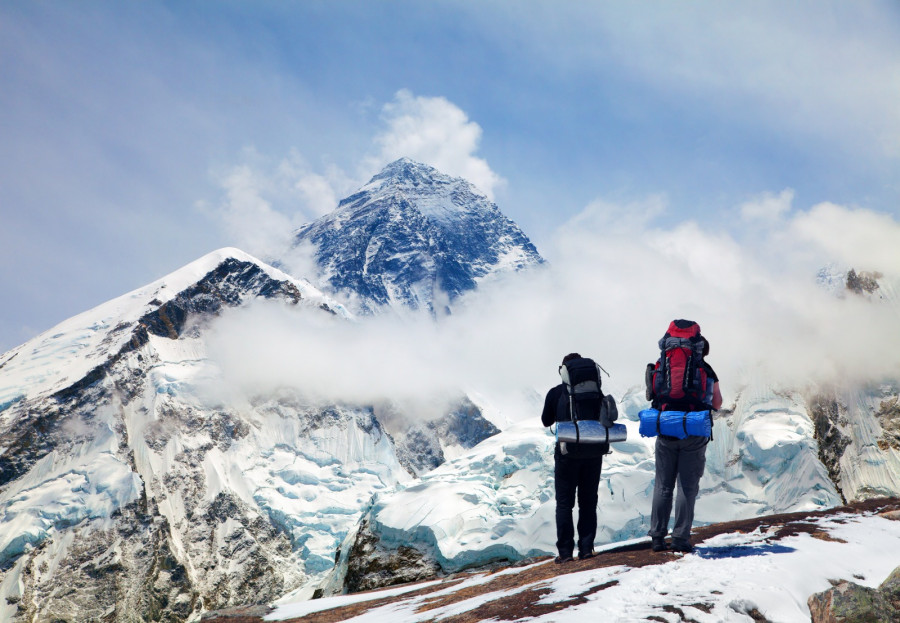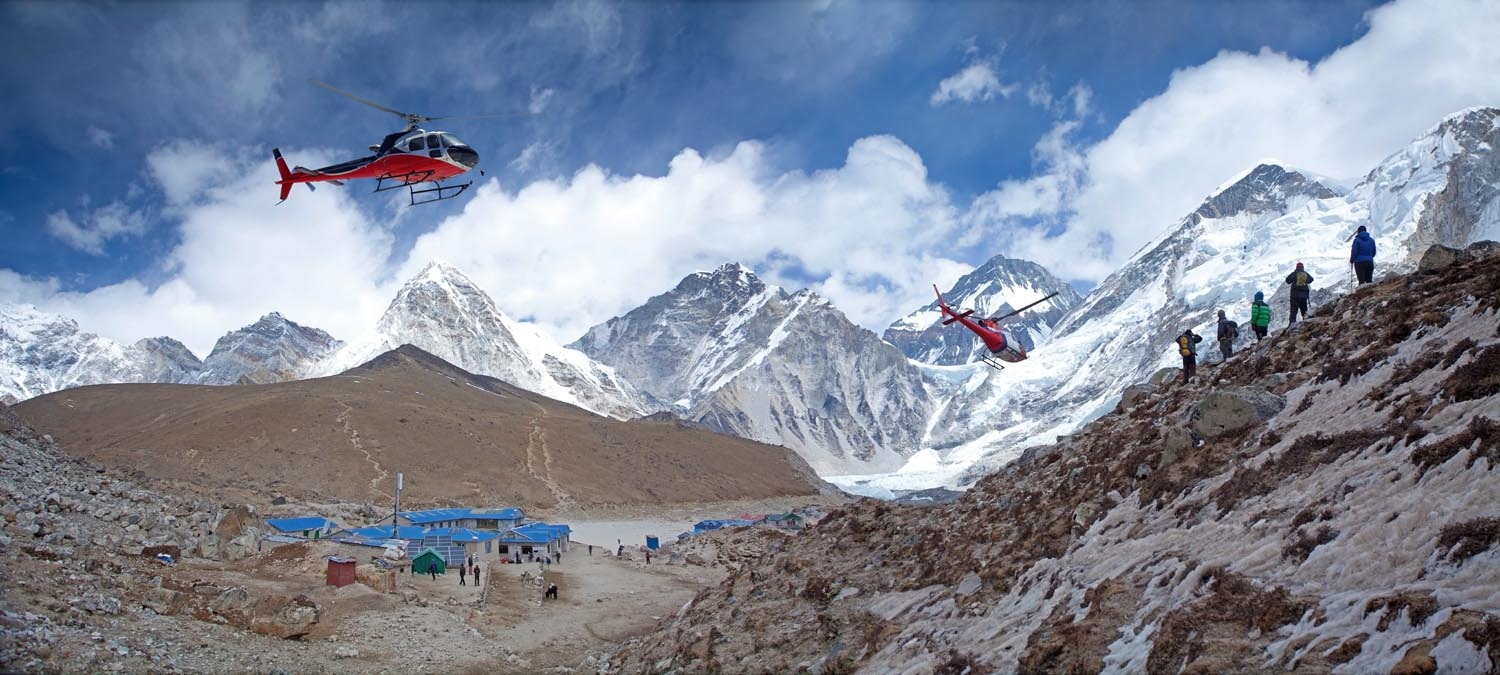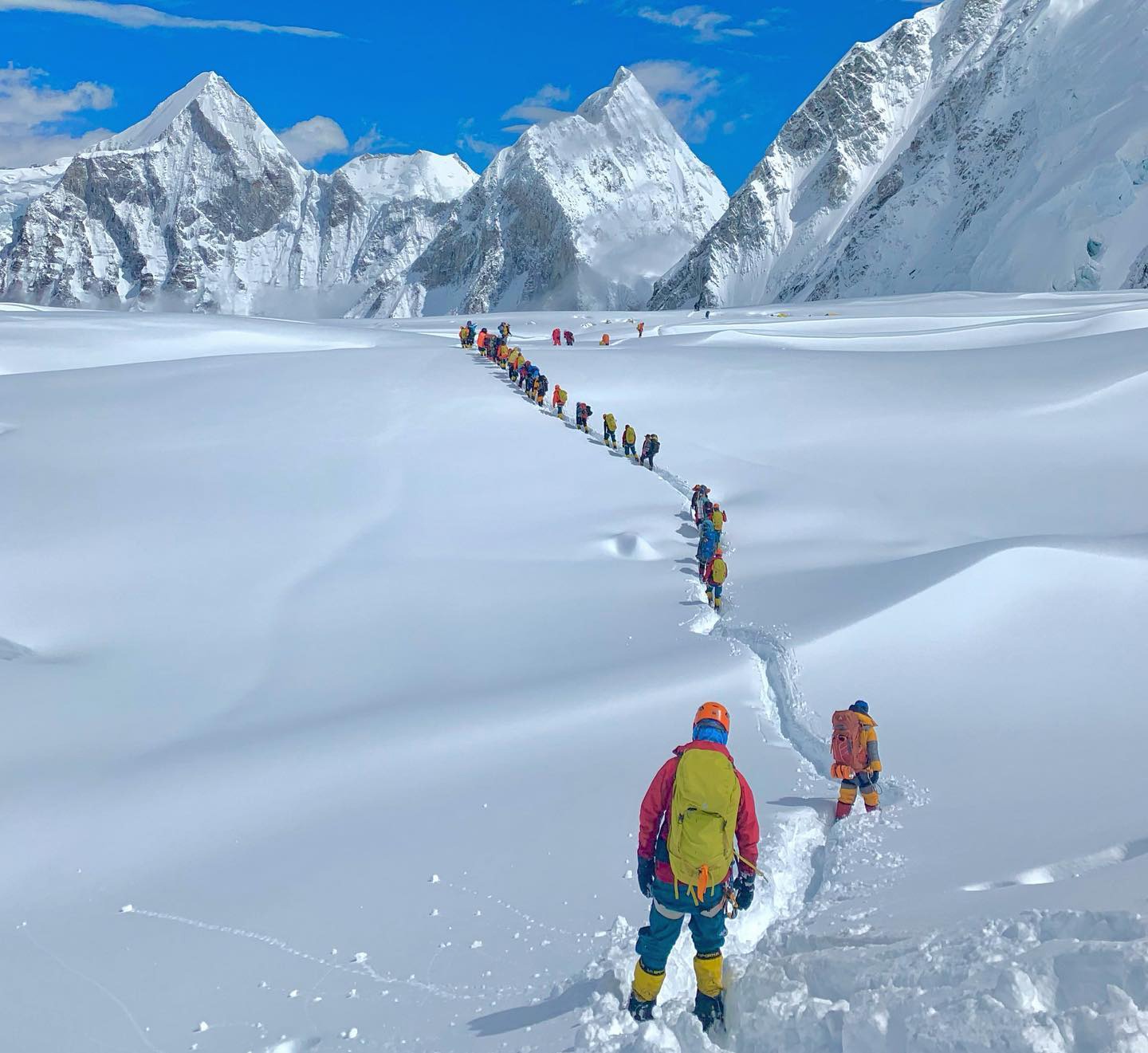Money
How costly will Everest be? Climbing rules are changing
New regulations will address issues like garbage, limiting footfall, and revenue generation from world’s tallest peak.
Sangam Prasain
Four hundred twenty-one climbing permits were issued for fee-paying individuals during the 2024 Everest season, which ended on May 29. Around 600 people, including 200 foreigners, completed the perilous ascent. Nearly 2,000 people assembled at the base camp. Eight died. These people brought 100 tonnes of waste.
Looking ahead to 2025, the world’s tallest peak could have new rules, tighter restrictions and higher fees.
Tourism Minister Hit Bahadur Tamang told the National Assembly on Thursday that the ministry has tabled a draft of a new Mountaineering Regulations at the Cabinet, to address the current challenges and evolving context.
The Post could not independently verify whether the new regulations will take effect from the beginning of the new fiscal year (July 16). Although the current Pushpa Kamal Dahal-led coalition government has fallen into minority following the withdrawal of support by its largest partner, officials say a change in government is unlikely to affect the mountaineering policy.
Rakesh Gurung, director of the mountaineering section of the Tourism Department, said that starting in the spring of 2025, a climbing permit for Everest will cost $15,000. Currently, the permit to climb the 8,848.86-metre Himalayan giant costs $11,000 for foreigners and Rs75,000 for Nepalis.
The last time the government reviewed the royalty fee was on January 1, 2015. At that time, an expedition with a maximum of 15 members cost $10,000 per person.
The cost has now been revised for autumn and winter, as well as the climbing routes. As per the draft, in 2025, Nepal will introduce death repatriation insurance for climbers for the first time.
“We have set a minimum coverage of Rs5 million ($37,593) for repatriating bodies under the insurance plan, which will be mandatory,” said Gurung. “The insurance should be done in Nepal.”
He said expedition agencies would be responsible for retrieving bodies from the base camp and upper reaches.
The draft regulations propose increasing the insurance coverage paid by climbers for their high-altitude guides to Rs2 million ($15,037) from the existing Rs1.5 million ($11,278).
Additionally, the regulations mandate that every climber, no matter how experienced, must be accompanied by a Nepali guide.
“We have proposed a ban on alpine-style or solo climbing,” said Gurung.
Before preparing the new regulations, the Law Ministry debated the issue, as it was concerned that banning solo climbing could restrict the personal freedom of alpinists.
“But we presented our arguments on why banning solo climbing is crucial for saving lives,” said Gurung. “The law ministry was finally convinced.”

Among eight deaths on Everest this year, five were preventable, said Gurung.
The Mongolian duo—Tsedendamba Usukhjargal and Lkhagvajav Purevsuren—who were both experienced mountaineers and members of the Hunnu hiking club—climbed Everest without supplemental oxygen and Sherpa guides. They went missing on May 13 and were found dead on May 17.
On May 22, Binod Babu Bastakoti, a Nepali national, died near the South Col while descending from the summit. It was later found that he decided to hire a guide only at Camp II when he started facing difficulties.
As in previous years, this year too, a group of foreign climbers were reportedly found climbing the higher reaches without obtaining a permit from the government.
The new regulations propose introducing “Monitoring Rangers” on Everest from next season, comprising officials from the Nepal Army, Nepal Police, Armed Police Force, and various ministries and government bodies.
“This unit will be authorised to monitor every activity on Everest and go up to the higher reaches for investigation,” said Gurung.
According to the Himalayan Database, which records all expeditions and deaths in the Himalayas, there have been more than 200 deaths on the Nepal side of Everest between 1953, when Edmund Hillary and Tenzing Norgay Sherpa first scaled the peak, and 2022.
Nepal’s tourism ministry started documenting Everest incidents in 1922 when seven Sherpa climbers died in an avalanche, marking the first reported deaths on the tallest mountain. But it has no archive of those who lost their lives on the icy slopes.
Separately, the tourism department has proposed a garbage management fund—to be raised from each climber, which will be used to clean up Everest.
“We have proposed that the fund provision be included in the Tourism Act, which is currently in the drafting phase,” said Gurung, adding that this provision, however, is not part of the new regulations.
With more and more people visiting each year, Everest has grown increasingly polluted. This has led to the contamination of the local watershed, threatening the health of local people.
The slopes are littered with discarded empty oxygen canisters, abandoned tents, food containers, and even human faeces. The base camp has tented toilets with large collection barrels that can be carried away and emptied. Hundreds of gas and electric heaters and stoves are used at the base camp to cook food and keep warm, thus contributing to the warming of the area.
Climate change is melting snow and ice, exposing even more garbage and bodies that have been covered for decades. All that waste pollutes the natural environment and poses a serious health risk to everyone who lives in the Everest watershed.
Nearly 100 tonnes of garbage were collected during this spring climbing season from Everest and Lhotse, which share the same base camp.
According to the Sagarmatha Pollution Control Committee (SPCC), 77.19 tonnes of waste was collected from the Everest base camp alone during the Spring 2024 climbing season. With 8-9 tonnes coming from the higher camps brought by the expedition agencies, the SPCC collected 85 tonnes of waste this spring.
The breakdown of collected waste shows burnable garbage at 27.99 tonnes, recyclable garbage at 7.51 tonnes, human waste at 27.53 tonnes, and kitchen waste at 14.15 tonnes. Besides, the Nepal Army collected over 11 tonnes of garbage.
In the Spring of 2023, the SPCC managed nearly 70 tonnes of waste generated by expedition groups.

Since 2015, the SPCC has also enforced the 8 kg garbage rule, under which every climber ascending the Everest base camp must bring back at least 8 kg of garbage. Anyone visiting Everest must pay a $4,000 garbage deposit, which is refunded if the person returns with 8 kg.
Before the start of the climbing season this year, the Supreme Court issued a mandamus order directing the government to regulate the rising number of expeditions on the world’s tallest mountain.
A division bench of justices Sapana Pradhan Malla and Sushma Lata Mathema ordered the government to issue climbing permits only after specifying the number of climbers that can be safely accommodated.
The court order followed increasing traffic jams on the world’s highest peak and the trash people leave on its slopes. Everest has even been called the ‘world's highest garbage dump’.
This spring, the government implemented a slew of new rules in the Himalayas, including mandatory use of tracking devices and poo bags while summiting the peak.
Jagat Prasad Bhusal, chief administrative officer of the Khumbu Pasang Lhamu Rural Municipality, told the Post in a recent interview that the rural municipality sold 1,700 poo bags. “In the first year of its implementation, we have received good feedback and the requirement to bring the bags back.”
“We are now discussing Everest's ‘carrying capacity’ as per the Supreme Court order. It’s difficult to ascertain what exactly the limit of Everest is,” said Gurung.
In 365 days, Everest opens its climbing window for less than two weeks, depending on the weather.
“Hopefully, we will soon have an answer to this query,” said Gurung.




 6.73°C Kathmandu
6.73°C Kathmandu















